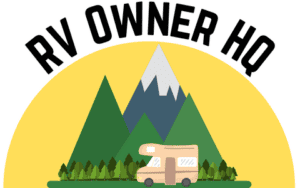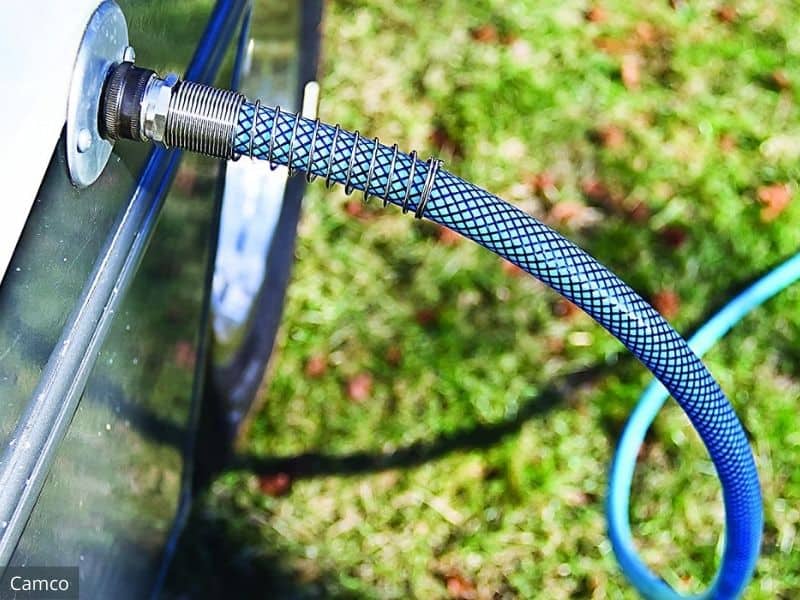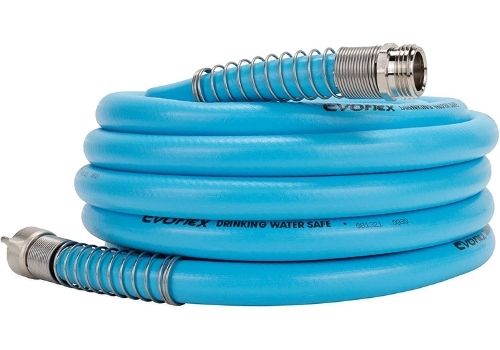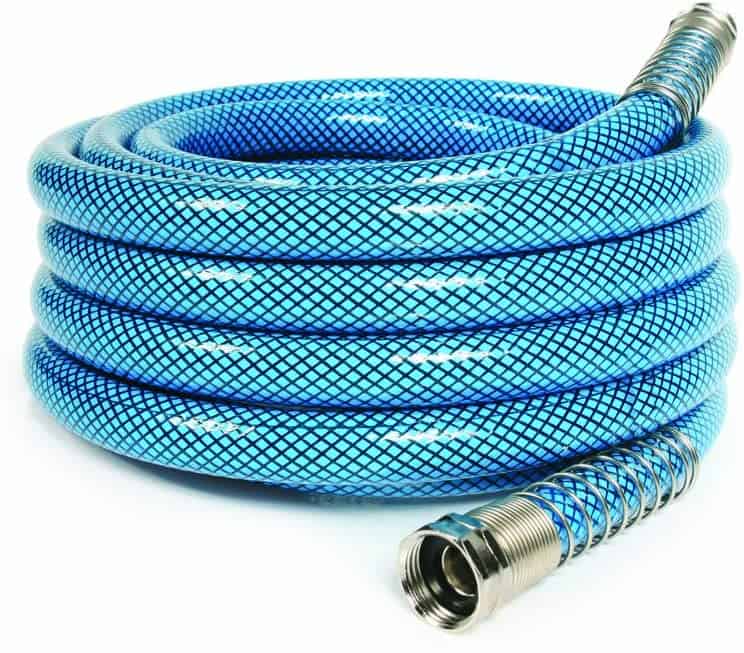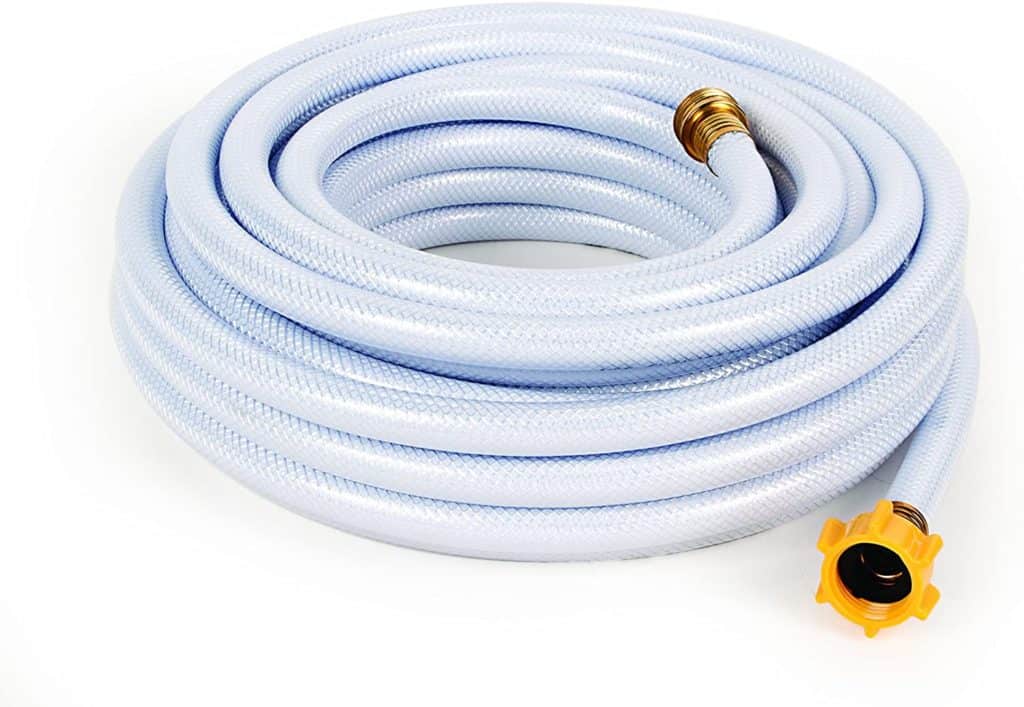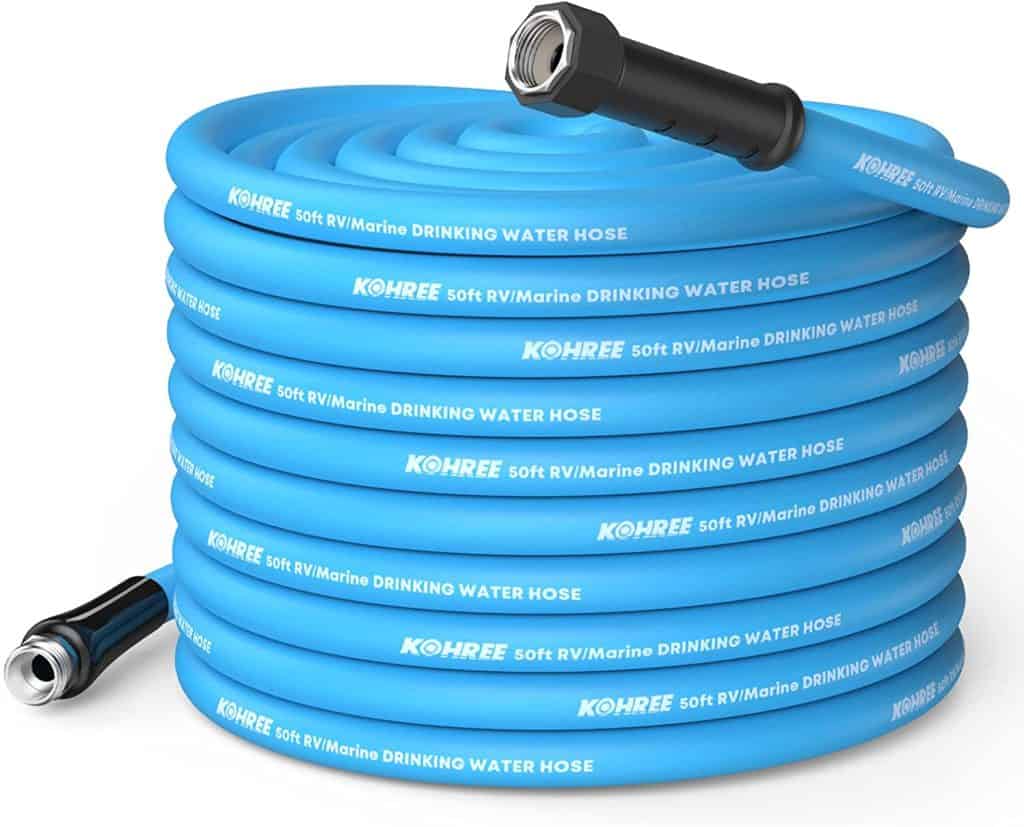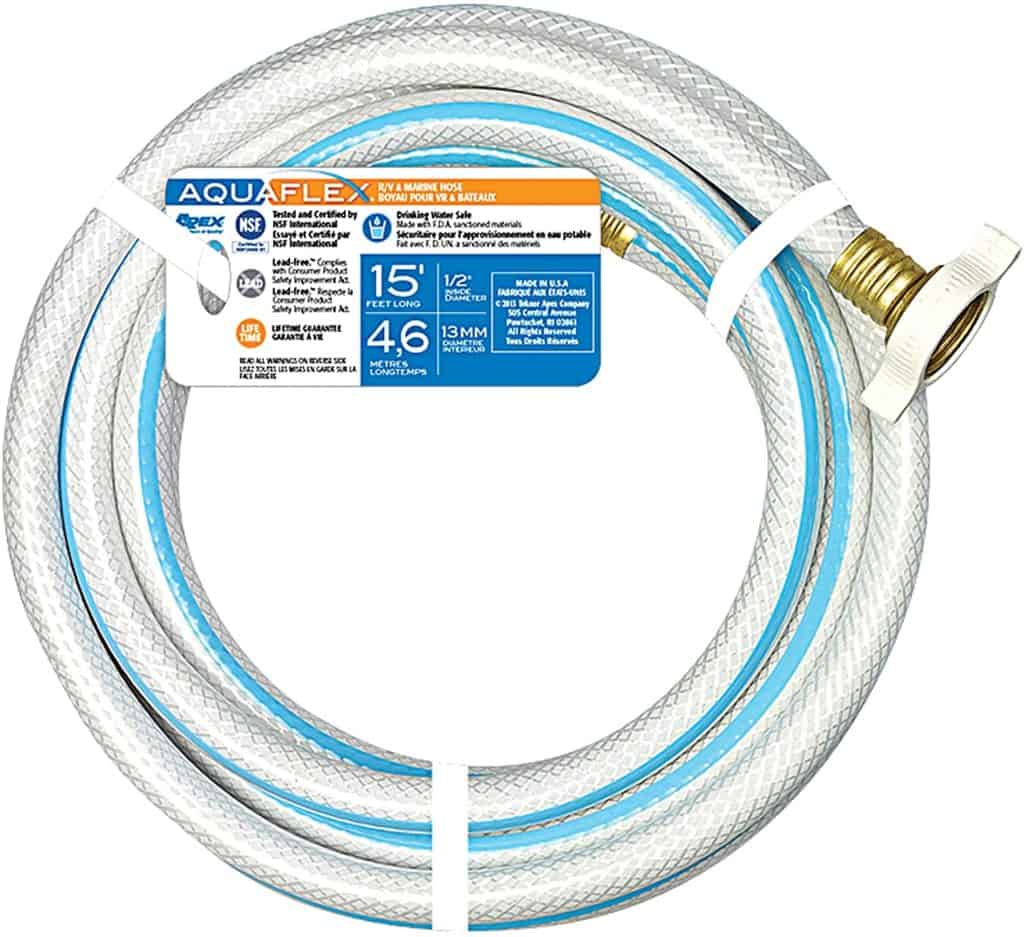When choosing the right RV water hose, there are several things you need to consider before buying, including its construction, the type of material it’s made from, and its length.
However, one key factor that’s often overlooked is the diameter of the hose.
Because while you might assume that all RV potable water hoses are the same diameter, this is actually not the case.
As RV water hoses can either be 1/2 inch or 5/8 inch in diameter.
Which can have an impact on not only the overall performance of the hose but also its flow rate, which is measured in gallons per minute (GPM).
So should you buy a 1/2 or 5/8 inch RV water hose?
A 1/2-inch RV water hose will get the job done for most RV applications, however, it’s generally best to upgrade to a 5/8 inch RV water hose for larger RVs or if you’re using a longer RV water hose. As this will ensure that you have a good flow rate for all your RV water needs.
If you’re looking for more specifics on why you should choose a 5/8 inch RV water hose over a 1/2 inch RV water hose though, make sure to keep reading.
As we show specifically how RV hose diameter and length can impact flow rate, as well as highlight several other key factors that can affect flow rate and water pressure below.
Plus, we provide several ways that you can improve the water pressure and or flow rate in an RV.
How Hose Diameter and Length Impact Flow Rate
Hose diameter is one of the main factors that will dictate the flow rate of a hose, which measures how fast the water travels through the hose.
And as a general rule of thumb, the larger the diameter, the higher the flow rate.
As can be seen from the below table, which shows the different potential flow rates for an RV water hose depending on its size and length.
RV Water Hose Flow Rate
| RV Hose Diameter | RV Hose Length | Flow Rate |
|---|---|---|
| 1/2″ | 25′ | 9.5 GPM |
| 5/8″ | 25′ | 9.8 GPM |
| 1/2″ | 50′ | 8.5 GPM |
| 5/8″ | 50′ | 9.5 GPM |
| 1/2″ | 100′ | 7.5 GPM |
| 5/8″ | 100′ | 8.5 GPM |
Based on 50 PSI Pressure and 10 GPM Open Spigot
However, it’s not just hose diameter that affects flow rate, as is evident from the above table.
As hose length also plays a critical role in flow rate as well, with longer hoses generating more resistance, which ultimately reduces flow rate.
This means that a long hose will offer a reduced flow rate, while a short hose will offer a higher flow rate.
Because of this, It’s generally best to opt for a wider 5/8 inch RV hose in the shortest length possible, in order to maximize flow rate.
Other Factors that Can Affect Flow Rate and Water Pressure Inside an RV
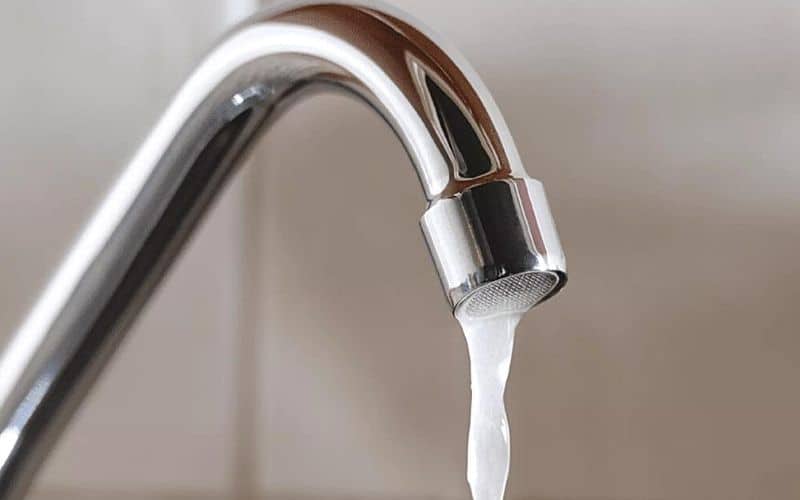
While diameter and length of an RV water hose are two of the primary factors that affect flow rate and water pressure.
There are also several other potential causes for reduced flow rate and water pressure inside an RV, which we’ve listed below.
Clogged or Partially Blocked In-House or In-Line Water Filters
If you have a water filter installed in your RV or an in-line filter attached to your RV water hose, it’s possible that these could become clogged over time and start to restrict water flow, if the filters are not changed regularly.
Low Water Pressure from the City or Well Water Supply
If you’re hooked up to a city water supply, the water pressure is typically regulated by the municipality, which will usually regulate the PSI to be between 40 and 80 psi, for residential water service.
So if you’re experiencing water pressure lower than this, it could be due to an issue with the city water supply.
If you’re connected to well water, this usually ranges from 40 to 60 psi depending on the location.
So if you’re experiencing water pressure below this, it could be due to an issue with the well water source or pump.
RV Water Pump Not Working Properly
If you’re using you’re RV’s fresh water tank and not connected to city water and experiencing low water pressure, you could be having an issue with your RV water pump.
RV Water Lines are Frozen or Partially Frozen
If you’re experiencing low water pressure and or flow rate inside the RV and it’s below freezing outside, it’s possible that the water hose leading to your RV has frozen (best case scenario) or that the water lines inside the RV have frozen (worst case scenario).
Incorrectly Adjusted In-Line RV Water Pressure Regulator
If you have an in-line water pressure regulator attached to your RV water hose and the flow rate or water pressure inside the RV is lower than normal, it’s possible that the regulator is not set correctly and needs to be adjusted.
Dirty or Corroded Fittings
Dirty or corroded fitting on an RV water hose or on the RV itself can also decrease flow rate and water pressure.
Ways to Improve Water Flow Rate for an RV
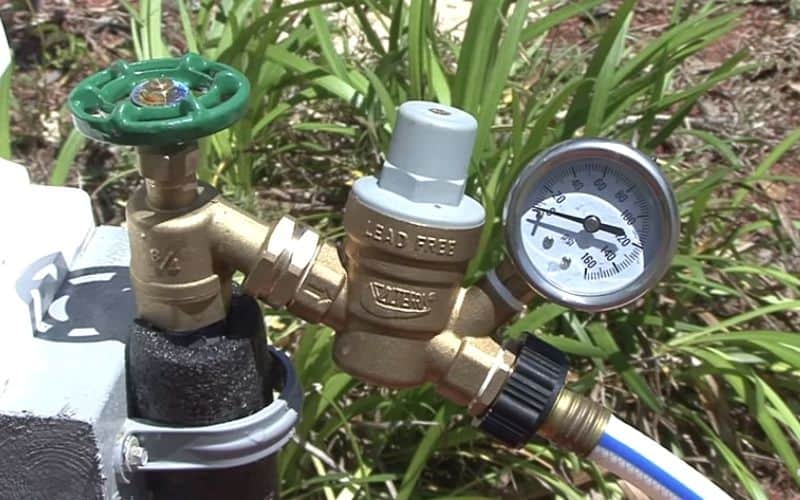
If you’re not happy with the flow rate inside your RV, there are a few things you can do to try and improve it.
Use a Wider 5/8 Diamer RV Water Hose
One of the easiest ways to improve the water flow rate inside an RV is to upgrade from a 1/2 inch diameter hose to a 5/8 inch diameter hose.
Use a Shorter RV Water Hose
While it’s not always possible to use a shorter RV water hose, due to the campground or campsite hook-up situation.
Try to use the shortest RV water you can, ideally either a 10 or 25-footer for improved flow rate.
Use an Adjustable In-Line Water Pressure Regulator
If you don’t already have one, we recommend using an adjustable in-line water pressure regulator, like this popular one on Amazon.
As this will help to ensure that the water pressure inside your RV stays at a consistent level, regardless of the fluctuating water pressure from the campground or city supply.
It will also help to protect your RV plumbing and fixtures from any damage that could be caused by excessive or high pressure.
Best 5/8 Inch RV Water Hoses
Now that we’ve gone over some of the reasons why you might want to use a 5/8 inch RV water hose, let’s take a look at five of the best ones.
1. Camco EvoFlex Super Flexible Drinking Water Hose
- Price: $15 – $40 (Depending on Length)
- Diameter: 5/8″
- Available Lengths: 4′, 10′, 25′, 35′, 50′
- Key Features: Drinking Water Safe, BPA-Free, Lead-Free, Phthalate-Free, UV-Stabilized, Made In the USA
2. Camco Premium Drinking Water Hose
- Price: $30
- Diameter: 5/8″
- Available Length: 25′
- Key Features: Drinking Water Safe, Certified to NSF/ANSI/CAN 61 for Drinking Water, Lead-Free, BPA-Free, Phthalate-Free, Made from PVC, Heavy-Duty Kink-Free Design, Made in the USA
3. Camco Tastepure Freshwater Hose
- Price: $10 – $20 (Depending on Length)
- Diameter: 5/8″
- Available Lengths: 4′, 10′, 25′, 50′
- Key Features: Drinking Water Safe, Made from PVC, NSF certified, BPA-Free, Phthalate-Free, UV-Stabilized
4. Kohree Heavy Duty RV Drinking Water Hose
- Price: $20 – $40 (Depending on Length)
- Diameter: 5/8″
- Available Lengths: 15′, 25′, 50′
- Key Features: Drinking Water Safe, Lead-Free, Phthalate-Free, Non-Kink Design, Mold Resistant, Upgraded Aluminum Leak-Free Connectors, Can Withstand Extreme Heat & Cold
5. Teknor Apex AquaFlex RV/Marine Hose
- Price: $20
- Diameter: 5/8″
- Available Length: 25′
- Key Features: Drinking Water Safe, Lead-Free, Non-Kink Design
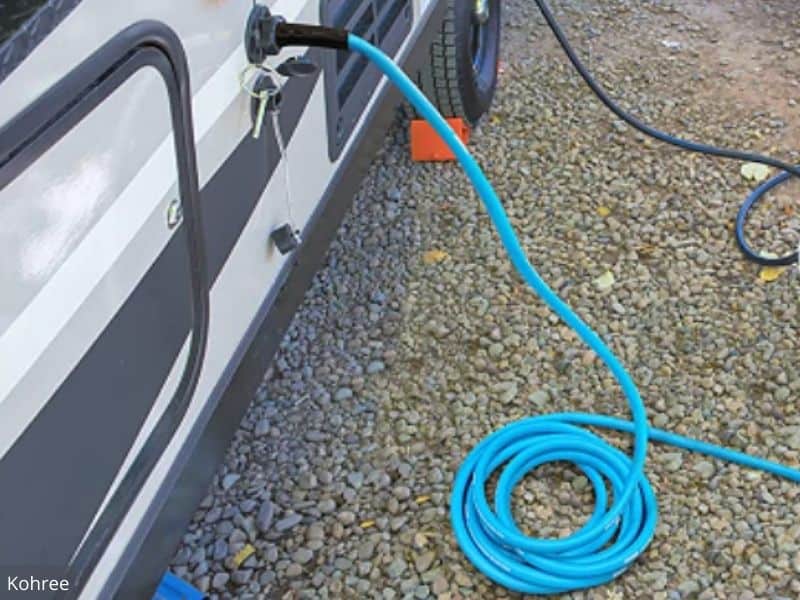
FAQs
There really isn’t a one size fits all, when it comes to RV hose length, as the length of hose you need can vary greatly depending on the campground or the campsite, as well as on what type of camping you like to do.
For example, a 10-foot water hose might be all you need at one campsite, while another campsite might require a 25-foot hose.
In addition, if you like to boondock and camp in more remote locations, you might need a 50-foot water hose.
Because of this, it’s generally recommended that you have a second hose and a couple of different hose lengths, to handle different RV hook-up situations.
Such as a 10-footer and 35-footer, a 25-footer and 35-footer, or maybe even a 25-footer and a 50-footer.
The 1/2 or 5/8 measurement describes the diameter of the water hose in inches.
So the main difference between a 1/2 and 5/8 water hose is the diameter of the hose, with a 5/8 water hose being slightly wider than a 1/2 water hose in diameter.
You should always use an RV or marine grade hose intended for freshwater for your RV’s freshwater supply.
Which is usually either a blue hose or a white hose.
And never use a garden hose, as garden hoses are not rated for potable water or drinking water and can transmit mold, mildew, chemicals, and lead, and can cause the water in your RV to smell and taste bad.
Final Thoughts
When buying an RV fresh water hose, there are many factors you need to take into account before purchasing, including the length of the hose, its construction, and its materials.
But it’s also important to consider the RV hoses diameter as well, as this will ensure you’re getting the best possible flow rate for your RV water supply.
Additional Resources:
For more information about RV water hoses, check out our article “8 Things To Know About RV Water Hoses Before Buying“.
Sources:
Garden Hose Flow Rates – SWAN The Watering Company
Recent Posts
When cruising down the highway in your RV, the last thing you want is a tire blowout! Not only is it dangerous, but RV tire replacement isn't cheap, costing $200 to $300 per tire. The good news,...
Nothing ruins an RV adventure faster than a breakdown with no way to fix it. Because of this, every RVer should have a well-stocked RV tool kit for those unexpected roadside emergencies and campsite...
